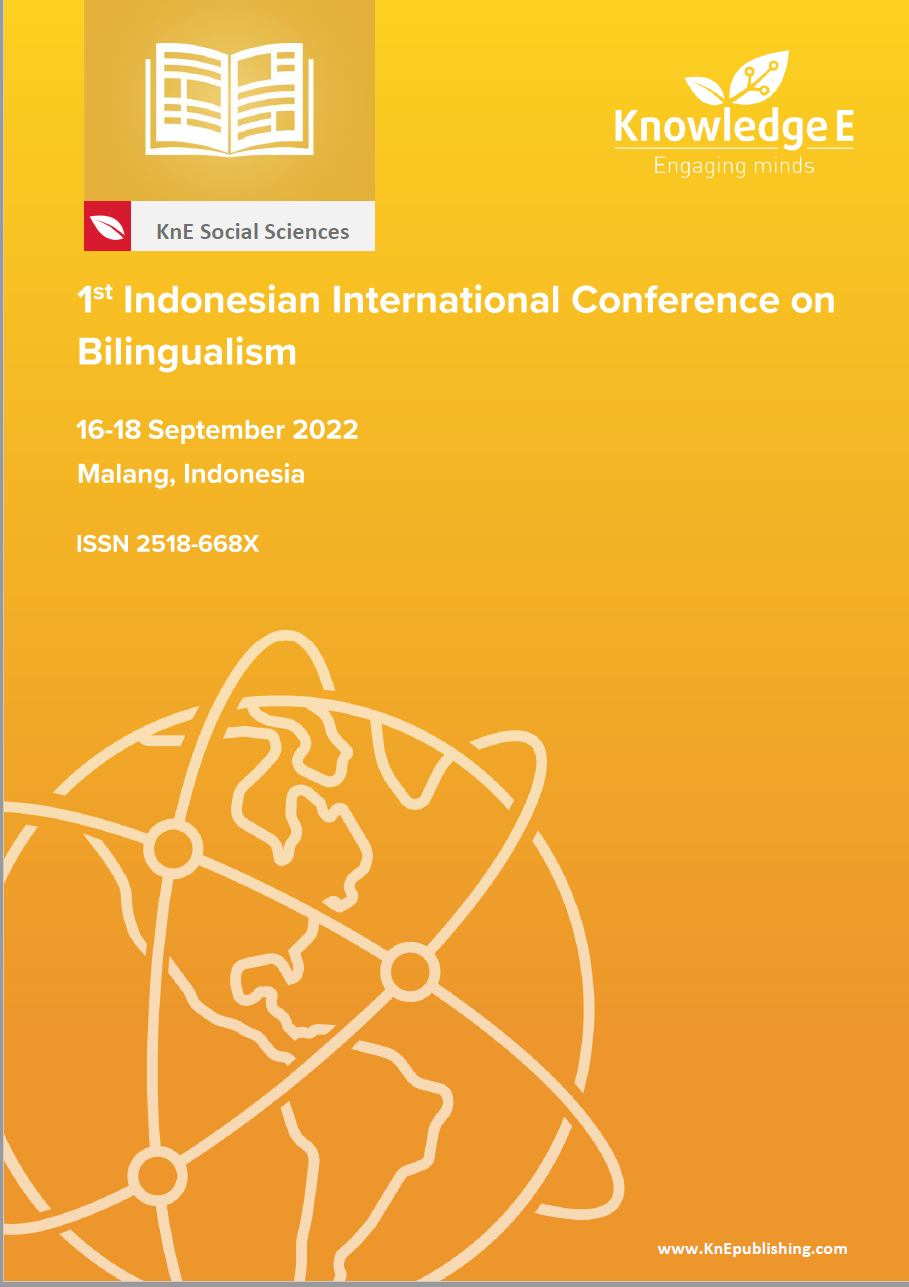Language Used in The International Class Program at The Elementary School Level
DOI:
https://doi.org/10.18502/kss.v8i7.13242Abstract
This study aimed to determine the classroom language used in the International Class Program for a private elementary school in Malang city, Indonesia. This qualitative research involved three teachers who taught subjects of Math, Science, and English with English as a medium of instruction. The results showed that the classroom language used by the teachers was in the forms of giving directions, asking questions, discussing, and expressing agreement and disagreement. Also, some teachers have tried using action verbs in Bloom’s Taxonomy to foster higher-order thinking skills while teaching in class. However, some teachers still used Indonesian extensively to give directions and instructions. Therefore, continuous training in English Language proficiency and English as a medium of Instruction pedagogy must be established to strengthen International Class Program teachers’ skills.
Keywords: classroom language, International Class Program, Elementary school
References
[2] Albaladejo S, Coyle Y, de Larios JR. Songs, stories, and vocabulary acquisition in preschool learners of English as a foreign language. System. 2018;76:116–28.
[3] Anderson LW, Krathwohl DR, Airasian PW, Cruikshank KA, Mayer RE. Pintrich, Wittrock MC (Eds.). A taxonomy for learning, teaching, and assessing: A revision of Bloom’s taxonomy of educational objectives. Boston: Addison Wesley Longman, Inc.
[4] Anggraeny E, Khongput S. Teachers’ perceptions and practices of critical thinking instruction in Indonesian senior high schools: A case study. TEFLIN Journal. 2022;33(1):1–26.
[5] Martriwati, Setyani RRS, Sari, H. N, Kaniadewi N. Pelatihan penggunaan bahasa kelas (classroom language) dalam pembelajaran Bahasa Inggris bagi guru SMK Jakarta Pusat 1 Jakarta. Jurnal SOLMA. 2018; 7(1):1–7. https://doi.org/10.29405/solma.v7i1.645.
[6] Bella MS, Zainil Y. An analysis of teachers’ classroom language at SMPN 4 Muara Bungo. Journal of English Language Teaching. 2020;9(4):644–51.
[7] Brown HD, Lee H. Teaching by principles: An interactive approach to language pedagogy. 4th ed. New York City: Pearson; 2015.
[8] Creswell JW. Educational research: Planning, conducting, evaluating, quantitative and qualitative research. 4th ed. New York City: Pearson Education Inc.; 2012.
[9] Dupree J. Language use in English Medium of Instruction (EMI) classrooms in an Indonesian bilingual school (Master’s thesis, Messiah College, Mechanicsburg, Pennsylvania). Available from https://mosaic.messiah.edu/gredu_st/10
[10] El Soufi N, See BH. Does explicit teaching of critical thinking improve critical thinking skills of English language learners in higher education? A critical review of causal evidence. Stud Educ Eval. 2019;60:140–62.
[11] Fitria TN. Teaching English through online learning system during Covid-19 pandemic. Pedagogy. Journal of English Language Teaching. 2020;8(2):138–48.
[12] Floyd CB. Critical thinking in a second language. High Educ Res Dev. 2011;30(3):289– 302.
[13] Hanifa R. EFL published materials: An evaluation of English textbooks for Junior High School in Indonesia. Adv Lang Literary Stud. 2018;9(2):166–74.
[14] Leona NL, van Koert MJ, van der Molen MW, Rispens JE, Tijms J, Snellings P. Explaining individual differences in young English language learners’ vocabulary knowledge: the role of Extramural English exposure and motivation. System. 2021;96:102402.
[15] Macaro E. Exploring the role of language in English medium instruction. Int J Biling Educ Biling. 2019;23(3):263–76.
[16] Nartiningrum N, Nugroho A. Online learning amidst global pandemic: EFL students’ challenges, suggestions, and needed materials. English Franca: Academic Journal of English Language and Education. 2020;4(2):115–40.
[17] Patton MQ. Qualitative research and evaluation methods. 4th ed. London: Sage; 2015.
[18] Saadé RG, Morin DM, Thomas JD. Critical thinking in e-learning environments. Comput Human Behav. 2012;28(5):1608–17.
[19] Saldana J. The coding manual for qualitative researchers. 2nd ed. London: Sage; 2013.
[20] Uys M, van der Walt J, van den Berg R, Botha S. English Medium of Instruction: A situation analysis. S Afr J Educ. 2007;27(1):69–82. Available from: https://www.ajol.info/index.php/saje/article/view/25099
[21] Widyahening ET. Penggunaan classroom language dalam pembelajaran Bahasa Inggris bagi guru SDN 01 Suruh Tasikmadu Karanganyar. ADIWIDYA. 2018;2(2):159– 66.

